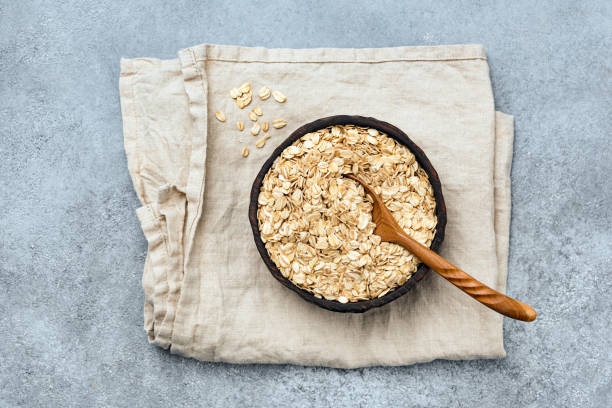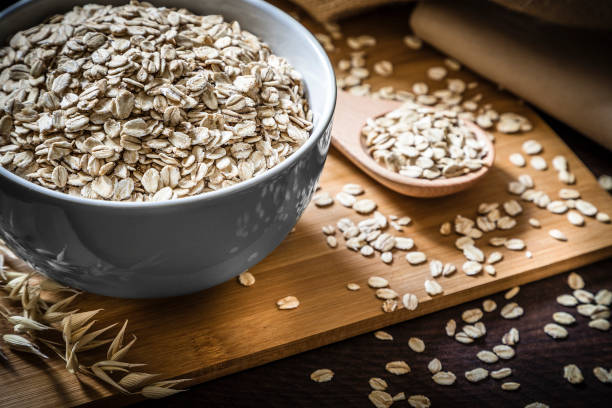Managing blood sugar is a daily goal for millions of people, especially those with diabetes or prediabetes. The good news? Some everyday foods can help—and they are one of the top choices. Oats are packed with fiber, key vitamins, and essential nutrients. They support steady energy, help control hunger, and may even lower the risk of blood sugar spikes.
They also help slow the rise of blood sugar after meals and keep you feeling full for hours. This can reduce cravings and support healthy eating habits throughout the day. More than just a warm and satisfying breakfast, oats are a smart, science-backed choice for managing blood sugar levels and promoting overall wellness.
In this blog post, you’ll discover how it can help lower blood sugar levels, which types offer the most benefits, the best ways to prepare them, and why they should be a regular part of a healthy diet. Whether you’re managing diabetes or just aiming for better health, they can make a real difference.
What Makes Oats Good for Blood Sugar?
They are whole grains packed with key nutrients that help support healthy blood sugar levels. The secret? A special type of soluble fiber known as beta-glucan. This powerful fiber slows down digestion, which helps prevent sharp spikes in blood sugar after meals.
Key Benefits of Beta-Glucan:
- Slows down the digestion of carbohydrates, helping to keep blood sugar levels steady after meals
- Helps the body use insulin more effectively, which supports better blood sugar control
- Helps lower sudden blood sugar spikes that happen after eating meals, promoting more stable energy throughout the day
- Supports a healthy gut by feeding good bacteria, which helps improve blood sugar control and overall digestion
According to the Harvard T.H. Chan School of Public Health, beta-glucan in oats forms a thick gel in the stomach. This gel slows down how quickly food is digested. As a result, it helps prevent sharp rises in blood sugar after eating.ses in blood sugar after eating.

Types of Oats: Which Are Best for Blood Sugar Control?
Not all oats are the same. Some types are more processed, causing them to digest faster. This quick digestion can lead to a faster rise in blood sugar levels after eating. Choosing less processed can help keep blood sugar steady.
Best to Worst for Blood Sugar:
- Steel-Cut Oats – These are the least processed type of oats. They contain the highest amount of fiber and have the lowest glycemic index, which means they help keep blood sugar levels steady for longer.
- Rolled Oats (Old-Fashioned Oats) – These are still a healthy choice. They are slightly more processed than steel-cut but retain a good amount of fiber and nutrients. Rolled oats digest a bit faster but still help support balanced blood sugar levels.
- Quick Oats – These are more processed than steel-cut or rolled. Because they digest faster, they can cause blood sugar to rise more quickly. Still, they are a convenient option for busy mornings.
- Instant Oats – These are the most processed type of oats. They have the highest glycemic index, which means they can raise blood sugar levels faster than the others. While convenient, they may not be the best choice for steady blood sugar control.
Tip: For better blood sugar control, choose steel-cut or rolled. These options digest more slowly and help keep your blood sugar steady. Try to avoid flavored instant oats, as they often contain added sugars that can cause spikes in blood sugar.
How They Help Lower Blood Sugar
They help control blood sugar in several ways backed by science. They slow digestion, reduce blood sugar spikes, and improve how your body uses insulin.
1. Slow Carbohydrate Absorption
The soluble fiber found in them slows down how carbohydrates break down into glucose. This means blood sugar rises more slowly after eating, helping to keep levels steady and balanced.
2. Improve Insulin Sensitivity
Studies show that eating themcan help the body respond better to insulin, the hormone that controls blood sugar levels. This improved insulin sensitivity helps keep blood sugar steady and balanced.
- A 2021 review published in the Journal of Functional Foods found that eating them helped lower fasting blood sugar and HbA1c levels in people with type 2 diabetes. This shows that it can play a helpful role in managing blood sugar over time.
3. Reduce Appetite and Prevent Overeating
It helps you stay full for a longer time, which can stop unhealthy snacking and lower how many calories you eat. This can support weight loss, which is an important part of managing diabetes and keeping blood sugar under control.
Nutritional Profile (Per 1 Cup Cooked)
- Calories: 154
- Fiber: 4g (mostly soluble)
- Protein: 6g
- Fat: 3g
- Carbs: 27g
- Sugar: 1g
- Magnesium, Iron, and B Vitamins
They have a low to medium glycemic index, meaning they raise blood sugar slowly. This effect is even better when you eat them with protein or healthy fats, which help keep blood sugar levels steady for longer.

Best Ways to Eat Oats for Blood Sugar Control
They are incredibly versatile. Here are some diabetes-friendly ways to enjoy them:
1. Overnight Oats
Try soaking steel-cut or rolled oats overnight with chia seeds, Greek yogurt, and fresh berries. This easy no-cook method makes a delicious and healthy breakfast ready to eat in the morning.
2. Oatmeal with Protein
Add eggs, cottage cheese, or a scoop of protein powder to your cooked oats for a meal that helps balance blood sugar. Including protein boosts fullness and supports steady energy throughout the day.
3. Savory Oat Bowls
Skip adding sugar and instead top your oats with sautéed spinach, mushrooms, and a poached egg. This savory option is tasty and helps keep your blood sugar steady.
4. Baked Oatmeal
Make a tray of baked oats using cinnamon, nuts, and unsweetened almond milk. This easy recipe is perfect for meal prep and gives you a healthy breakfast ready to enjoy all week long.
Combine Oats with Other Blood Sugar-Friendly Foods
Pairing oats with foods rich in fiber, protein, or healthy fats can help lower their glycemic impact. This means your blood sugar will rise more slowly, keeping energy steady throughout the day.
Here are smart combos:
- Oats + Nuts or Nut Butter
- Oats + Greek Yogurt
- Oats + Chia or Flaxseeds
- Oats + Berries (low in sugar, high in antioxidants)
What About Instant Oats and Added Sugars?
Many packaged oatmeals are loaded with sugar, which cancels out the benefits. Always check the label. Look for:
- Less than 5g of added sugar per serving
- Simple ingredients (oats + real food toppings)
- No artificial flavors or colors
Or better yet—make your own!
What Do Studies Say?
More and more studies show that they can help manage blood sugar levels effectively:
- Clinical Nutrition (2021): A study found that eating them helped improve blood sugar control in people with type 2 diabetes over a period of 4 to 8 weeks.
- Nutrition Reviews (2019): Regularly eating them was shown to lower HbA1c and fasting blood sugar levels, helping improve overall blood sugar control.
- Diabetes Research and Clinical Practice (2016): The beta-glucan found in them helped lower blood sugar levels after meals, supporting better blood sugar control throughout the day.
These studies show that they are a great choice for a diabetes-friendly diet. Still, it’s important to talk with your doctor before making any major changes to your eating plan.
Common Questions About Oats and Blood Sugar
Can people with diabetes eat oats every day?
Yes, most people with diabetes can enjoy it every day. For the best results, eat them in moderation and pair them with low-glycemic index (low-GI) foods to help keep blood sugar steady.
Are oats gluten-free?
They are naturally gluten-free, but they can sometimes be contaminated with gluten during processing. If you have celiac disease or gluten sensitivity, it’s important to choose that are certified gluten-free to stay safe.
How much oats should I eat?
Start with ½ to 1 cup cooked oats per meal. Adjust based on your personal blood sugar response.

Simple Oatmeal Recipe for Blood Sugar Control
Ingredients:
- ½ cup steel-cut oats
- 1 cup water or unsweetened almond milk
- 1 tbsp chia seeds
- ½ cup blueberries
- 1 tbsp almond butter
- Dash of cinnamon
Instructions:
- Cook oats as directed.
- Stir in chia seeds and cinnamon.
- Top with blueberries and almond butter.
- Enjoy warm!
Final Thoughts: Oats Are a Smart Choice for Blood Sugar Health
They aren’t just a warm, comforting breakfast—they’re also a powerful tool for managing blood sugar naturally. Thanks to their high fiber, slow-digesting carbohydrates, and important nutrients, it help keep blood sugar steady, improve insulin sensitivity, and support long-term heart health.
They are easy to prepare, affordable, and very versatile. Just be sure to skip adding sugar and choose toppings that help keep your blood sugar steady, like nuts, seeds, or fresh fruit.
Ready to Make Them Part of Your Daily Routine?
Try adding them to your breakfast this week and pay attention to how your body feels. Keep your meals simple, tasty, and consistent to get the best results for blood sugar control.

